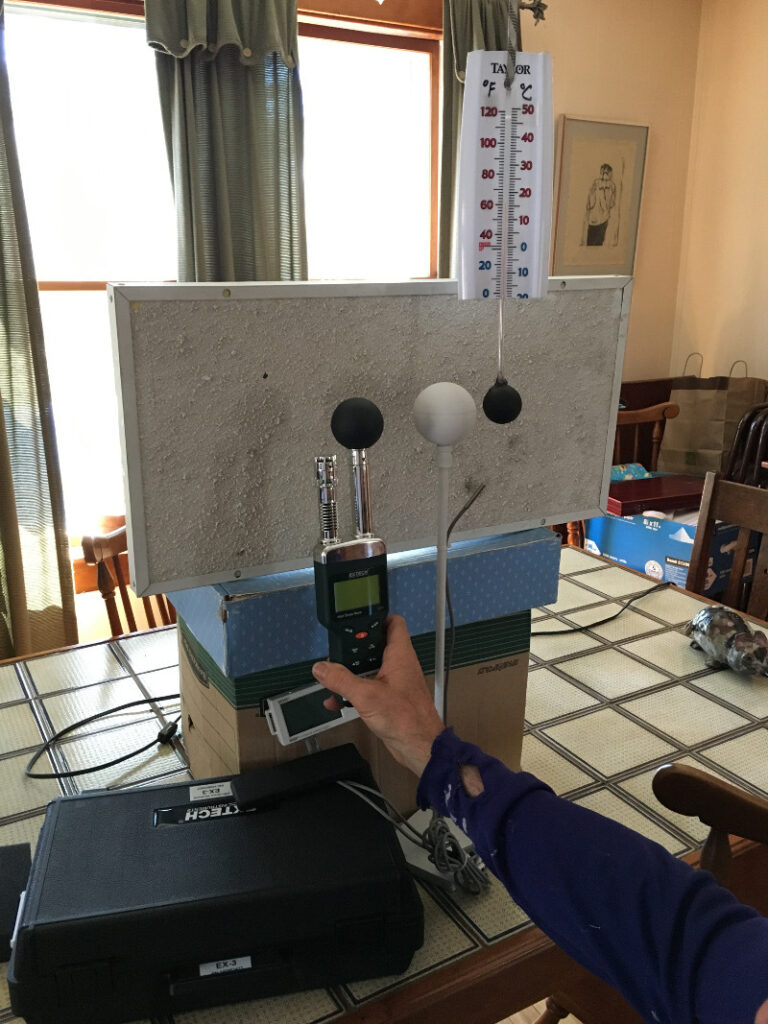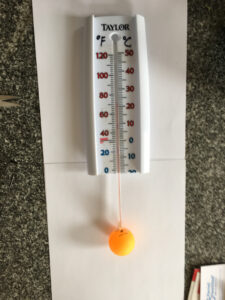Have you ever wondered how scientists measure different kinds of temperatures? Which temperature would you measure if you stuck a ping-pong ball on the end of a thermometer? We use different things to measure different temperatures. Build your own globe thermometer and discover how radiant heat can impact how comfortable you feel in different environments.
If you are on a city sidewalk or urban area surrounded by roads or other infrastructure, those structures absorb and re-emit the sun’s heat more than other things like trees or grass. Mean radiant temperature serves as a measure of this exchange of heat between our surroundings and ourselves, and it is a big factor in how comfortable we feel outside. People are generally more comfortable in environments with lower mean radiant temperatures. This is one reason why a green park feels cooler than a grey concrete sidewalk.
In this activity, you will make a globe thermometer. A globe thermometer typically consists of a black, hollow, air-filled globe on the end of a thermometer or temperature sensor. It was introduced by Vernon in the 1930s as a means of assessing the combined effects of radiation, air temperature and air velocity on human comfort (Vernon, 1932). Globe thermometers are one of the tools scientists use to measure mean radiant heat and are a good indicator of thermal comfort. It is highly recommended to do this activity with an adult as there are a few steps that require adult supervision and assistance. Alternatively, you can prefabricate some of supplies, i.e., pre-drill holes in the ping-pong balls.

Curriculum Connections:
Grade 5 - 8 – Biology, Physics, Social Science, and Earth and Space Sciences
This activity can be paired with our Neighbourhood Temperature Investigation activity. Get outside and see how hot your block is!



